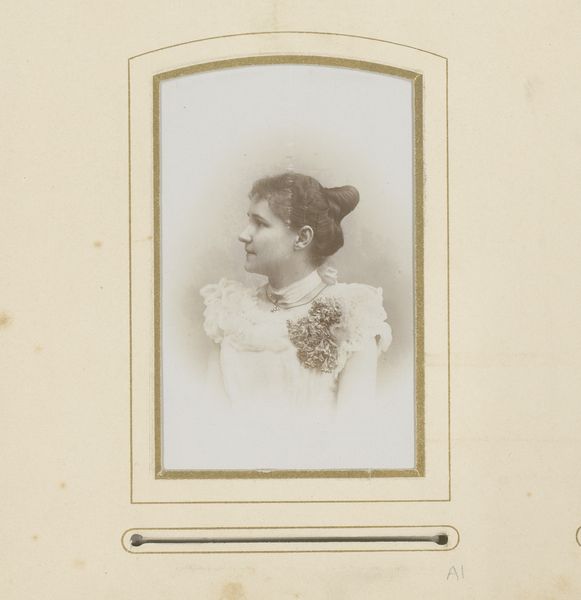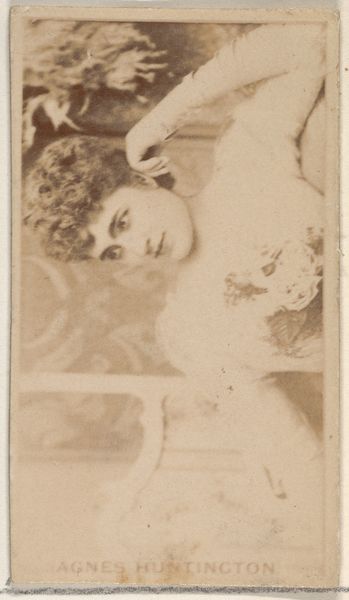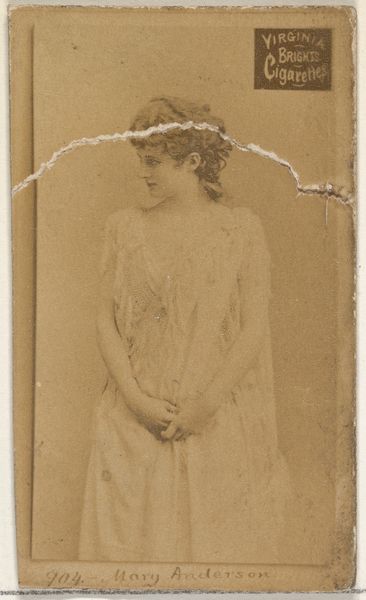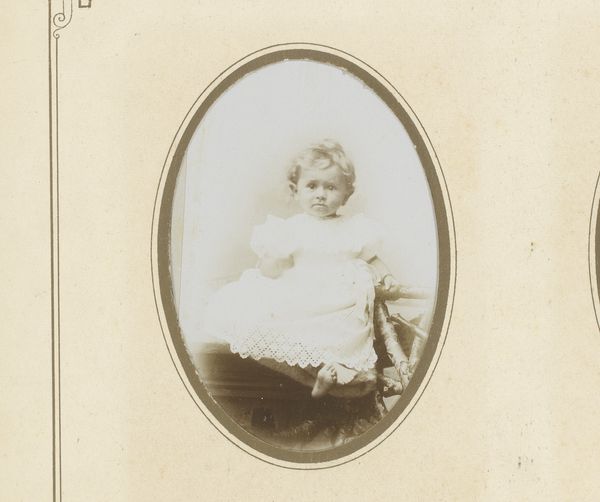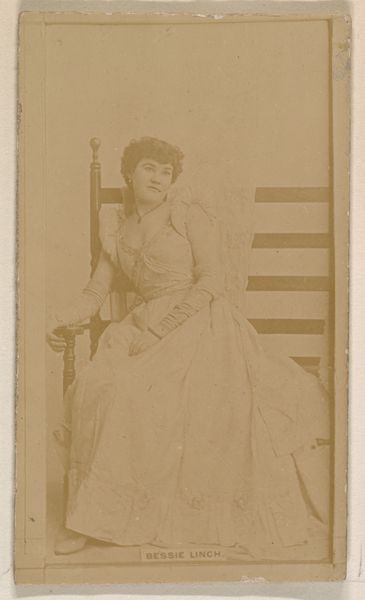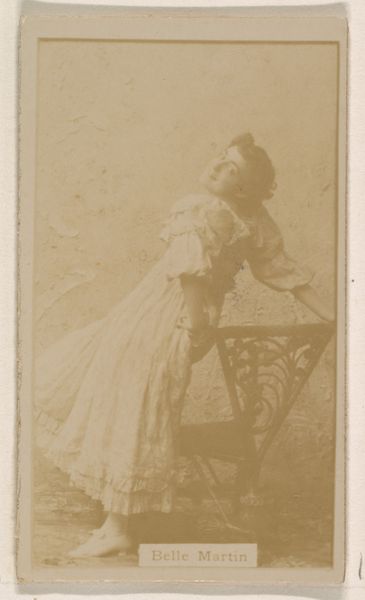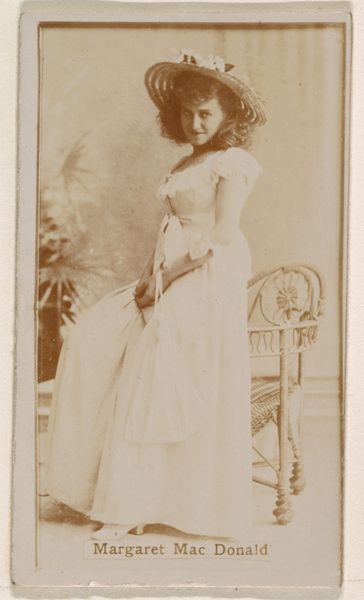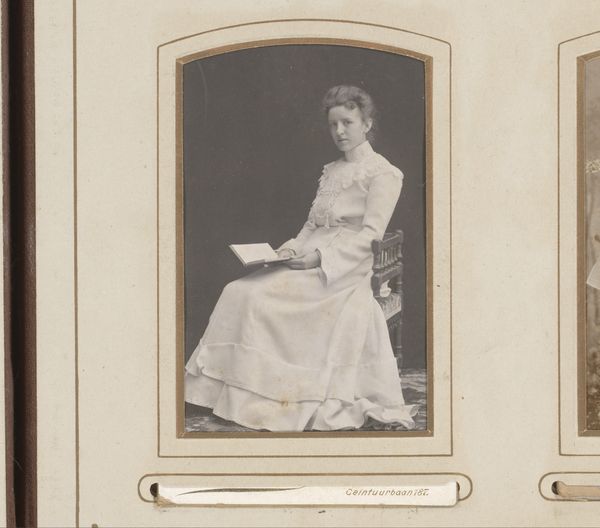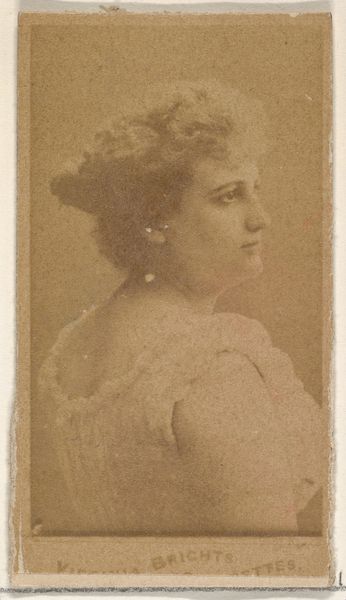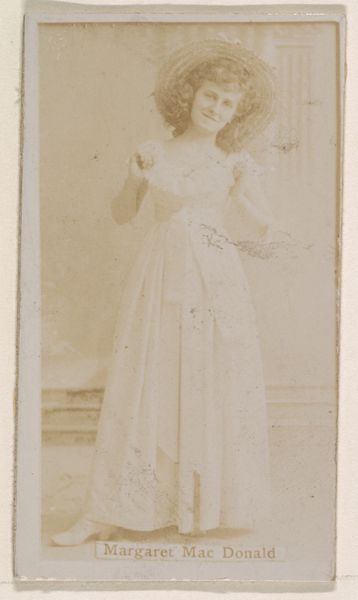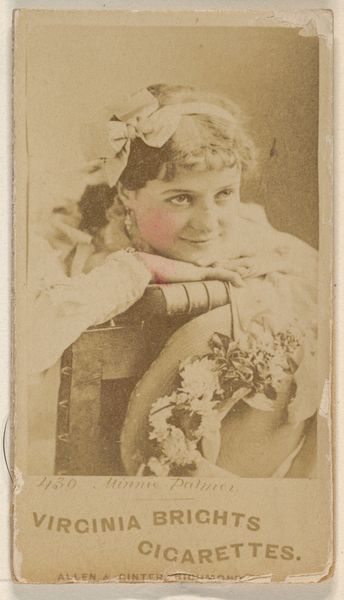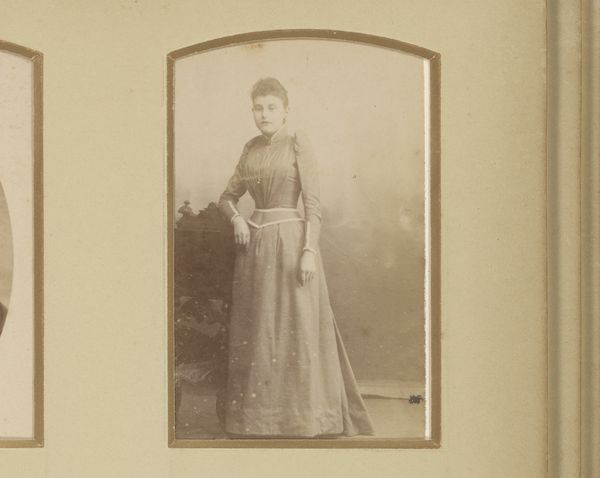
photography
#
portrait
#
table
#
aged paper
#
still-life-photography
#
toned paper
#
photography
#
genre-painting
Dimensions: height 87 mm, width 53 mm
Copyright: Rijks Museum: Open Domain
Curator: Here we have an 1863 photograph by Heinrich Eckert, entitled "Portret van een vrouw, zittend aan een tafel met vaas," or "Portrait of a Woman Sitting at a Table with Vase." The print is mounted on aged paper. Editor: The soft, sepia tones and formal composition give it a wistful air, almost like a faded memory. There’s an overwhelming sense of longing embedded in this picture. Curator: Yes, photography at this time was often viewed as a tool for preserving likeness, for warding off the inevitable effects of time and loss. The inclusion of the vase suggests domesticity but might carry a weightier symbolic load. Editor: I agree. Given the timeframe, the photograph likely served as a representation of status and the vase is clearly a status symbol, a demonstration of cultivated taste—but look at the woman’s face. It hints at the constricted role of women in the 19th century. Curator: Exactly! The woman's gaze is directed off to the side, perhaps suggestive of hope, but also resignation to the gaze forced upon her, literally encapsulated by the bordered picture. Is the vase also a vessel or prison? It recalls the Victorian language of flowers. A carefully chosen arrangement communicated sentiments that could not be voiced. Editor: It reminds me of the way women, then and sometimes still today, were constructed as objects of art, subject to certain beauty standards. I wonder what her true emotions were. The pose is a testament to performative constraint. Curator: Consider also the material reality: the paper mount surrounding the photograph. Think of how people handled this image, kept it safe. They kept a physical piece of history in their possession. How often do we truly consider what photographs will tell future generations about us? Editor: This image provides so much food for thought on issues related to status, class, gender—the stories held silently in material culture, in seemingly simple domestic settings. Curator: Yes, exactly, objects of sentimental value accrue cultural memory, acting as visual shorthand. Even across centuries, an image retains some of its emotional weight. Editor: Seeing through this lens invites us to consider how portraits and still lifes have played a significant role in expressing dominant ideologies but, at the same time, revealing social tensions.
Comments
No comments
Be the first to comment and join the conversation on the ultimate creative platform.
